TALES TO ASTONISH #63 (1964)
by Stan Lee & Steve Ditko
The Hulk serial in “Tales To Astonish” doesn’t get enough love. Basically the entire run is one continuous story, with lots of twists and turns, and the Hulk is more akin to his modern portrayal than the classic “Hulk smash” stereotype.
That’s also where he gets one of his surprisingly few villains: the Leader, who doesn’t even make it to the cover.
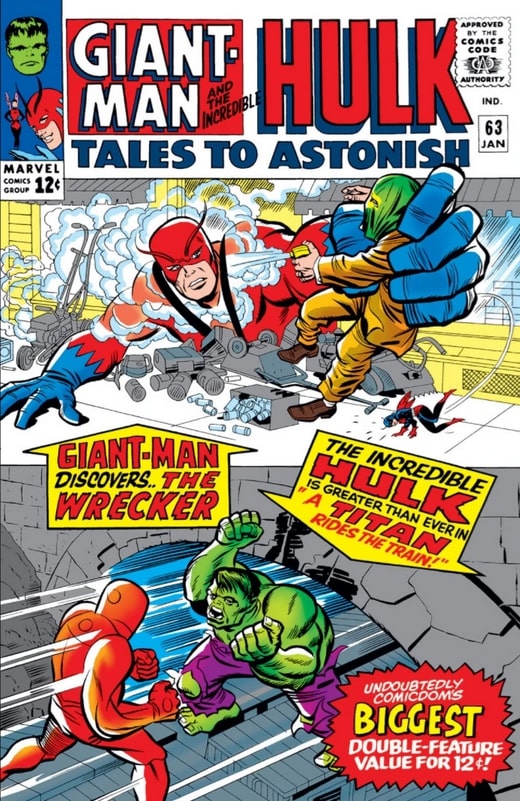
Technically speaking, the Leader appears in the previous issue… for two panels, the very first of the story and the very last, without showing his face or his giant forehead, and he’s just the guy who sent the Chameleon on a mission.
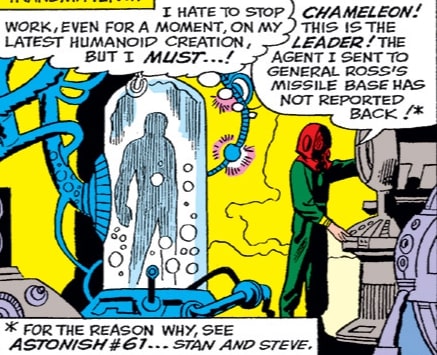

The first complete story featuring the Leader is #63, and that’s what I’m going to review.

And quite conveniently the first thing he does is narrate his origin story: he used to be an ordinary guy who got caught in an accident involving gamma rays.
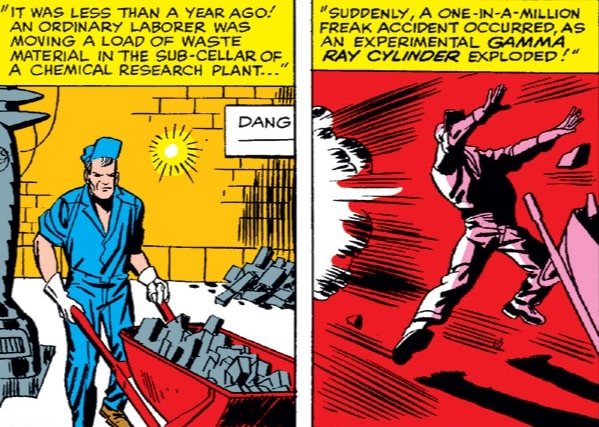
If this was real life he would die, but it’s a Hulk comic so naturally he’s completely fine after a ginormous dose of gamma rays.

The angle of the Leader not being particularly smart before the incident is not touched upon very often. I appreciate the fact that he actually has to study to get his new knowledge (albeit at an accelerated rate). More often than not in comics when a character becomes super-smart, he just magically knows stuff.
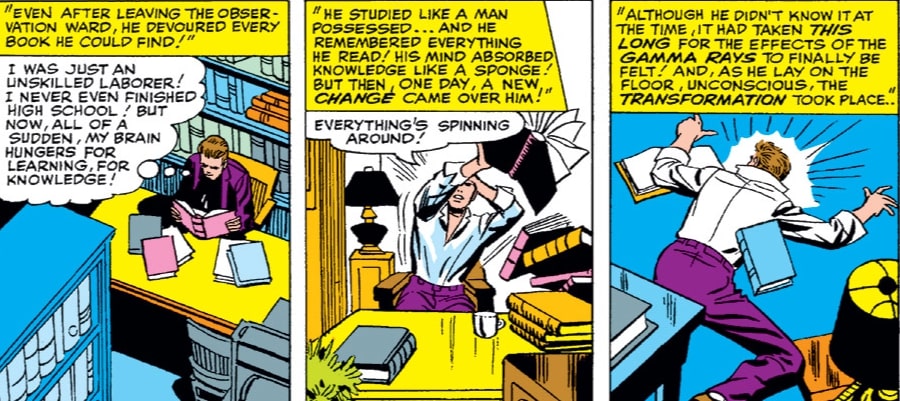
The body horror aspect is very understated, but I like it. The Leader doesn’t consider it horror, however, quite the contrary!
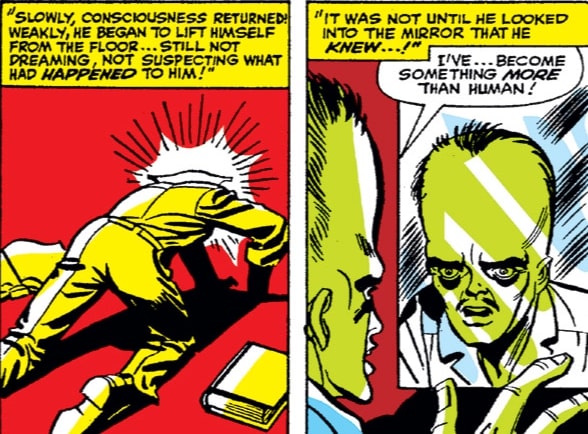
We won’t learn his civilian name (Samuel Sterns) for quite some time, because unlike Bruce Banner for the Hulk, the Leader VERY rarely transforms back into his human self.
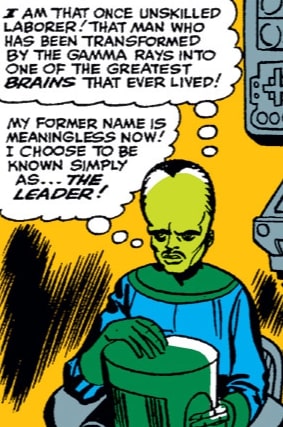
One aspect of the Leader that is there from the very beginning is that, when compared to other super-smart Marvel supervillains, he tends to handle things from behind the scenes rather than taking a more hands-on approach. The Mad Thinker is the only one that comes to mind who follows a similar path.
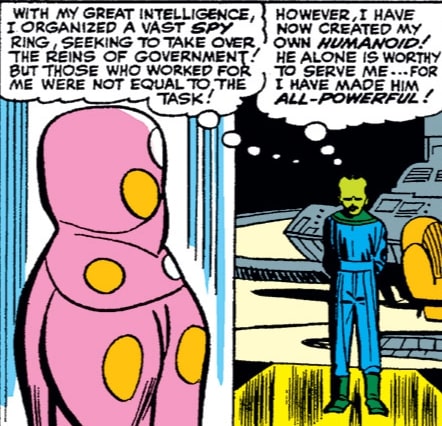
And like the Mad Thinker, the Leader is really into androids and robots. It’s kind of inevitable when he doesn’t have physical powers and his nemesis is the Hulk!
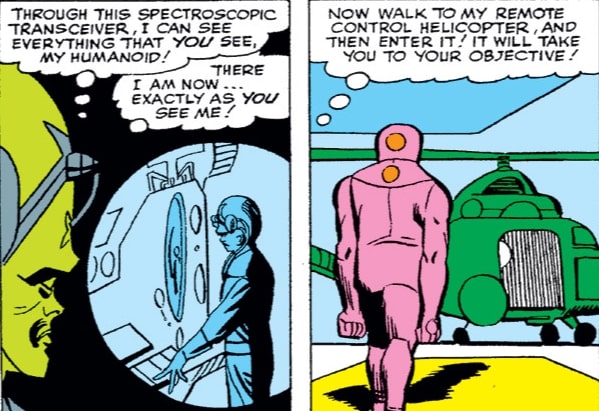
And those androids are quite versatile! In addition to being super-strong, “The Humanoid” absorbs the kinetic energy of anything you throw at it.

The thing that The Humanoid is stealing is a nuclear device created by Banner, so it’s only a matter of time before he transforms into the Hulk and attacks the android… only to bounce back when he hits it!
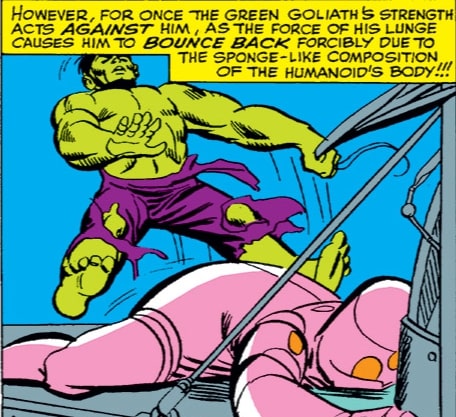
This comes as a surprise to the Leader, who not only didn’t expect the Hulk to show up but apparently didn’t have an idea that the Hulk exists.
Which is kind of dumb since the Chameleon met the Hulk in the previous issue, and was working for the Leader… didn’t he report back!?
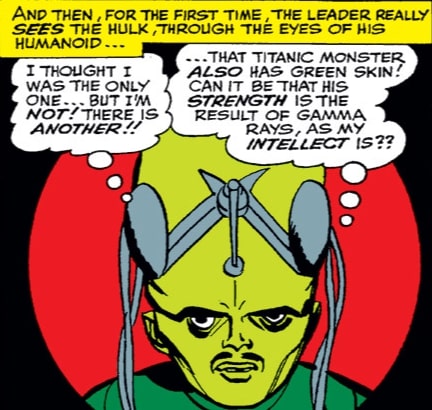
The problem with some Hulk stories is that it’s hard to come up with villains he can’t just overpower, but The Humanoid is a good example on how to do it right: the Hulk’s strength is basically meaningless here.

It’s such a good match that I’m not sure just how the Hulk wins the fight. He pushes The Humanoid out of the train and in doing so disconnects it from the Leader’s control… but considering that thing could take hits from THE HULK and not feel them, you mean to tell me that falling off the train damaged it!?
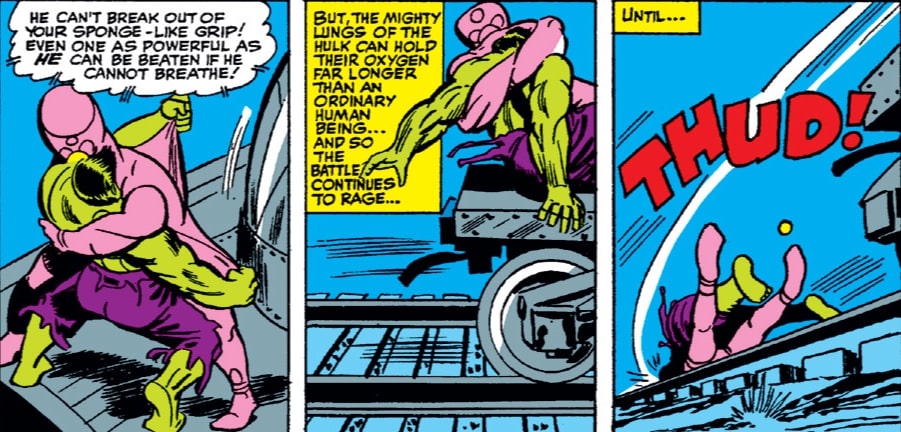
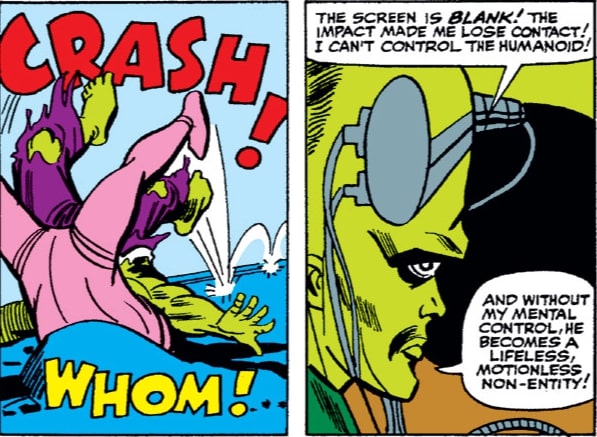
The Hulk catches up to the train, securing the nuclear device and preventing it from exploding (SOMEHOW), and we’re back to the classic Hulk-Banner dynamic.

We are still in the period where the general public didn’t know Banner is the Hulk, so this story ends on a cliffhanger (like all Tales To Astonish) with him being thrown in jail for being involved with the Leader’s spy ring.
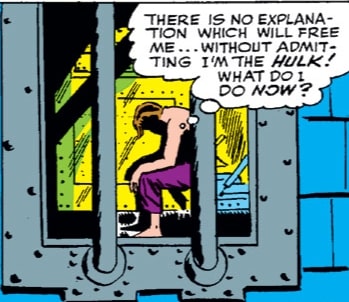
It’s at this moment that the Leader decides he’s going to be a Hulk villain.
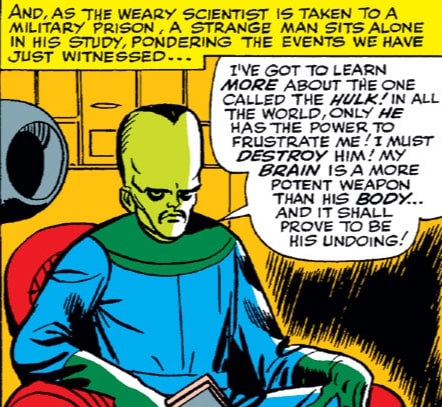
Historical significance: 8/10
While the Leader doesn’t have much of an impact on the Marvel Universe as a whole, obviously for the Hulk this is a big deal.
Silver Age-ness: 4/10
Surprisingly low given the time! The Hulk serial was ahead of its time when compared to most Marvel titles.
Does it stand the test of time? 9/10
It’s hard to judge individual Hulk stories of this period, given the serialized nature. But this was quite good! The Leader gets an interesting introduction, The Humanoid is a decent adversary, and both the story and the action (the latter to a lesser extent) flow very nicely.
It does have one problem: the resolution of the fight with The Humanoid feels very rushed.
It’s also a rather short story, a combination of the style of the time and of the need to dedicate the other half of the title to Giant-Man.
How close is this to the modern character? 8/10
The Leader is a strange nemesis. Not in concept: it makes perfect sense for the strongest man in the world to have as his worst enemy the smartest man in the world (it’s basically the basis for Superman and Lex Luthor, isn’t it?).
But it’s strange in execution because the Leader, despite being the Hulk’s greatest enemy… quite often disappears for very long stretches of time.
Aside from the 60s, most Hulk run tend to feature the Leader once, perhaps twice for a long run.
Plus he has the weird tendency of dying a lot! Most big time villains die and come back, sure, but the Leader has several “deaths” that last a surprising amount of time.
He will slowly become a more complex character, but not by much. He’s DEFINITELY become more and more evil as the years come by, and of course his relationship with the Hulk has become very very personal.
He’s a great villain for the Hulk, but there’s a reason why he never really branched out to other heroes… it’s the Hulk. If you’re a Captain America or Iron Man villain it’s only a matter of time before you fight the Avengers, but the Hulk tends to his own thing. Plus basically every major hero already HAS a super-smart supervillain bent on world domination… the Fantastic Four have like half a dozen!
He also has TWO very distinctive looks: there’s the classic “super-tall head”, which looks kind of ridiculous considering artists seemed to try one-upping each other in how big they could make his head!

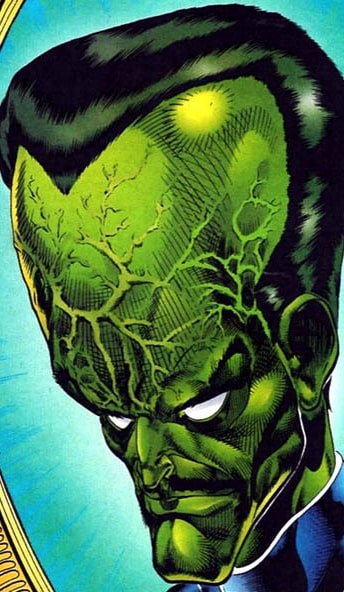
While that is BY FAR his most iconic and recurrent look, I’m extremely fond of his McFarlane look in Peter David’s run: it makes him look SLIGHTLY less ridiculous, and it looks like his brain is one massive super-tumor.
It helps that it’s also the best written Leader ever.

He also has a bunch of monstrous forms. Whenever the Hulk series goes into body horror, the Leader tends to get the worst of it.
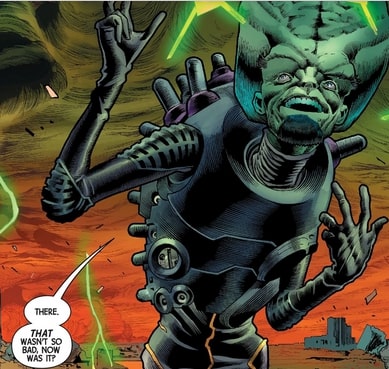
So maybe choosing the Hulk as his nemesis wasn’t such a smart idea, uh?

The Leader and Sinestro… Separated at birth?
One of the issues with the Leader (and probably one of the reasons why he doesn’t show up much outside of Hulk storylines) is that he doesn’t seem to have a coherent vision. With other world-conquering mastermind-types, we have an idea of what they want to accomplish – the Red Skull wants to create a Fourth Reich, Magneto wants a world where humans serve mutants, Doom would rule the world pretty much like he currently runs Latveria (until he gets bored). The Leader seems to be in for world conquest largely because it’s what evil supergeniuses do, and he’s the BEST evil supergenius so that’s what he’s obligated to do.
That’s a fair point!
I would also add that most versions of the Hulk wouldn’t really care if the Leader takes over the world, as long as he leaves him and his friends alone, so even in Hulk stories it’s not always easy to care all that much.